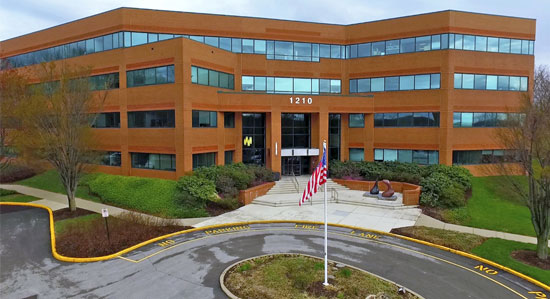Winter Driving Safety Tips: Stay Safe on Icy Roads

According to the Federal Highway Administration, nearly 900 people are killed and 76,000 people are injured yearly in car accidents due to winter weather.
As car accident lawyers, we know that beyond snowstorms — which worsen driving conditions and increase the chance of getting in an accident — general issues, like your car breaking down, can lead to more significant problems when it’s freezing outside. That’s why drivers must be on high alert and take extra precautions to stay safe on the roads during the winter months.
To keep yourself as safe as possible while driving on the roads this winter, follow these 16 tips:
1. Be Cautious Of Black Ice
If you’re driving and the road ahead looks wet, reduce your speed and proceed with caution because it could be black ice. Freezing rain or the refreezing of melted snow is what creates this thin glaze on the road. If a storm occurs before you head out, check if the temperature is below freezing (32 degrees Fahrenheit). Below-freezing temperatures provide the optimal condition for black ice to form. When you’re aware of the outside temperature, you’ll be able to better prepare for the road.
2. Inspect The Tread On Your Tires
Before the weather gets bad, you should check the tread level on your tires. If your tread is too low, it is highly recommended you invest in new tires or put chains on the existing ones. When driving on ice or snow with bare low-tread tires, it is more difficult for your car to grip the pavement, increasing your chances of getting in a crash or sliding off the road.
3. Check The Pressure Of Your Tires
When temperatures drop, it affects the pressure in your tires. If your tires’ pressure is too low, it puts you at risk of tire failure. To ensure your safety, periodically check your tire pressure and put air in them if necessary. You should also remember to check your spare tire at least once a month. If any tire fails, you’ll want a spare tire with adequate pressure to get you to your next destination safely.
4. Look Out For Snowplows
When you see a snowplow truck on the road, try your best to stay out of its way. A snowplow driver’s primary focus is to clear as much snow off the road as possible. With snow flying everywhere, it can make it difficult for the driver to see surrounding vehicles. Make sure you allow some distance between you and any snowplows to avoid collision and potential snow flying onto your windshield and obstructing your view.
5. Be Prepared For Unexpected Snow Squalls
A snow squall is when average snowfall unexpectedly intensifies into a blizzard for a short time. These storms typically last about 30 minutes but can make driving conditions dangerous in seconds. If you have a smartphone, the National Weather Service will alert your phone if it detects a snow squall in or around your area. Take these alerts seriously and protect yourself by reducing your speed, turning your hazard lights on, and looking for a safe spot to pull over if needed.
6. Avoid Using Cruise Control
Avoid turning on your car’s cruise control when it rains or snows. The roads may appear wet, but it could be ice covering them. If your vehicle hits the ice and loses traction, you have a better chance of regaining it because you can react faster and more accurately than your car.
7. Stay Up-To-Date With The Weather
Although weather predictions are not always accurate, staying up-to-date with them can help you determine when it is safest to travel. If a forecaster predicts a dangerous snowstorm heading toward your area, stay in your home until it passes and snowplows finish clearing off the roads.
8. Avoid Animals
Deer are most active from October through December, which means you may come across a few in your travels. Protect yourself and prevent deer-related accidents from occurring by taking extra safety precautions.
9. Protect Yourself From Glare From The Low Sun
During the winter months, the sun sets earlier, meaning you may experience heavy sun glares while commuting home from work. Make sure you leave a few car lengths of space between you and the vehicle in front of you to avoid sudden stops or accidents. You may also want to reduce your speed, wear sunglasses, and use your visor.
10. Leave Extra Space Between Cars
When the streets are damp with snow, slush, or ice, you need extra time to stop, whether at a light, stop sign, or if a car suddenly slams on its brakes. Leaving additional space between vehicles can help to prevent an accident if your car skids or hydroplanes in these conditions.
11. Have An Ice Scraper On Hand
Sometimes a storm occurs while you’re already out or on the road. When you have an ice scraper in your car, you’ll be prepared for the accumulation of snow or ice on your windshield no matter where you are.
12. Clear Snow And Ice Off Your Windows AND Roof Before Driving
You should never rush through the process or cut corners when clearing off your car after a snowstorm. Your front and rear windshields, all side windows, and the roof should be entirely clear of snow and ice once you’re ready to go. Many drivers neglect to clean their roofs, which harms other drivers on the road. Big chunks of ice or snow can fly off while you’re driving, causing other drivers to get into an accident.
13. Keep A Flashlight, Blanket, And Water Bottles In Your Car
If your car were to break down on a cold or stormy day or night, you need to be prepared to wait for help since it may take longer for roadside assistance to get to you. Or you may need to pull over during a storm until the conditions clear. Keeping a flashlight, blanket, and water in your car helps you see in the dark, stay warm, and stay hydrated as you wait.
14. Double-Check Your Windshield Wiper Fluid
Windshield washer fluid comes in handy when trying to keep your windshield clear during a snow or ice storm. Ensure your reservoir stays full during the winter months so you don’t run out when you need it most.
15. Fill Up Your Tank Before Long Journeys, And Make Sure Your Phone Is Charged
The unpredictability of the weather in the winter can leave drivers stranded or stopped for extended periods. One of the worst situations a driver can find themselves in is running out of gas in the middle of nowhere without a phone. Make sure you always have at least a half tank of gas and a full phone charge before heading out anywhere.
16. Consider Holiday Season Traffic
According to the NHTSA, an estimated 2,295 people die in motor vehicle accidents during major holiday periods. Safety should always be your top priority when driving during the holidays.
What to Do After a Winter Car Accident
Accidents can still happen even if you’re a safe driver and follow all the tips. If you get into a car accident this winter, watch the video below to learn what steps you should take immediately following the incident.
The easiest way to avoid an accident during a winter snowstorm is to stay home. If you must leave your house, use your judgment wisely, follow our tips, and never put yourself or others at risk by deciding to travel in dangerous conditions.
If you or a loved one was injured in a car accident, contact the personal injury lawyers at Flager & Associates today by calling (215) 953-5200. We provide free case evaluations.

Written by Adam D. Flager, Esq., Associate at Flager & Associates, PC
With his practice focused on litigation, Adam primarily represents clients in personal injury cases, such as motor vehicle, slip and fall, defective products, and construction and worksite accidents. He is licensed to practice in the Commonwealth of Pennsylvania, the State of New Jersey, the Eastern District of Pennsylvania, the District of New Jersey, and the United States Court of Appeals, 3rd Circuit. Adam received his J.D. from Widener University School of Law in 2009, where he graduated with pro-Bono Distinction.

